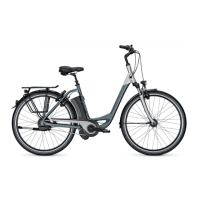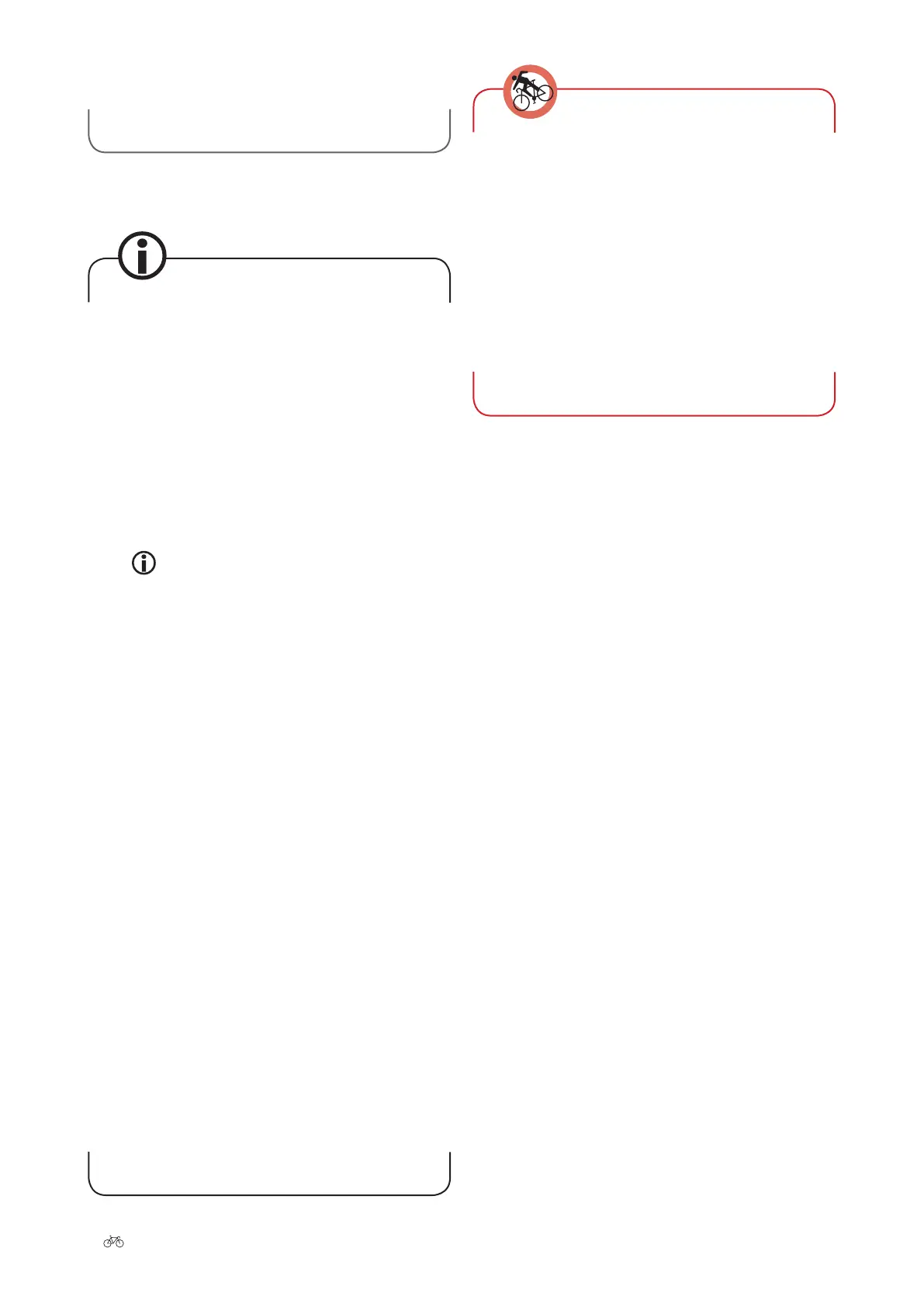8 I General User Manual
› Be ready to brake, especially if you are not sure
what lies ahead or are riding downhill.
4.5 Bike safety
› Only bikes that have been approved for use in
public places, as per the applicable regulations
(e.g. StVZO in Germany), may be used.
› Observe the maximum permitted gross weight of
the various bike types, as this could otherwise
lead to breakage or failure of safety-relevant
components. The brake system is also only de-
signed for the maximum permitted gross weight
of the bike. For a list of the maximum permitted
gross weights, refer to ➠
Chapter 30 "Technical
data".
The gross weight is the sum of the weight
of the bike + weight of the rider + weight of the
luggage. The gross weight also includes towed
weights such as trailers.
› If you notice that a part is damaged or warped,
do not use the bike until you have had the part
replaced as otherwise parts that are important to
operation of the bike may fail.
› Observe the maximum load-carrying capacity of
the pannier rack. This is marked on the pannier
rack directly (also refer to ➠
Chapter 30 "Techni-
cal data").
› Have maintenance and repairs carried out by a
professional bike workshop (for maintenance
intervals, refer to ➠
Chapter 28 "Regular inspec-
tions").
› If you make technical changes to your bike, take
the national trac regulations and applicable
standards into account. Bear in mind that this
could render your warranty invalid.
› Only replace electrical components on your bike
with type-tested parts.
› Only ride with suitable lighting in unfavourable
lighting conditions such as fog, rain, dawn/twi-
light or in the dark.
Bear in mind that with intensive use of your bike wear
increases accordingly. Many bike parts, particularly
on light sports bikes, are only designed for a specic
period of use. If this is exceeded, there is a consider-
able risk that components could fail.
Perform care and maintenance on your bike regularly.
In doing so, check important components, particularly
the ame, fork, wheel suspension, handlebar, handle-
bar stem, seatpost and brakes for warping and dam-
age. If you notice changes such as cracks, bulges or
warping, have your bike checked by a specialist cycle
shop before using again.
5 Legal provisions
If you wish to use your bike in road trac, make sure that
your bike complies with the road trac regulations. If
necessary, observe ➠
Chapter 22.2 "Special regulations for
road bikes".
5.1 Applicable road trac licensing
regulations
Before you take your bike on the road, nd out what the
relevant national regulations in your country are – in
Germany, these are the Road Trac Licensing Regulations
(StVZO) and the Road Trac Ordinance (StVO).
In Switzerland, the applicable regulations can be found
in the Ordinances relating to Technical Requirements for
Road Vehicles, Articles 213 to 218.
If you wish to ride in road trac in Austria, you must ob-
serve Ordinance 146 / Bicycle Ordinance.
Make sure each time you use your bike that it actually is
in the prescribed roadworthy condition, that the brakes
are properly adjusted and that the bell and lighting set
comply with the relevant regulations in your country, in
Germany these are the Road Trac Licensing Regulations
(StVZO).
In some EU countries, battery-operated ont lights and
rear lights may only be used by road bikes weighing less
than 11 kg. They must always be carried and have an o-
cial approval (sinuous line and K number). All other bikes
must use dynamo lighting sets. Every component of the
system must carry the ocial test mark which identies it
as "approved". The applicable regulations in your country
apply in this regard, e.g. the Road Trac Licensing Regu-

